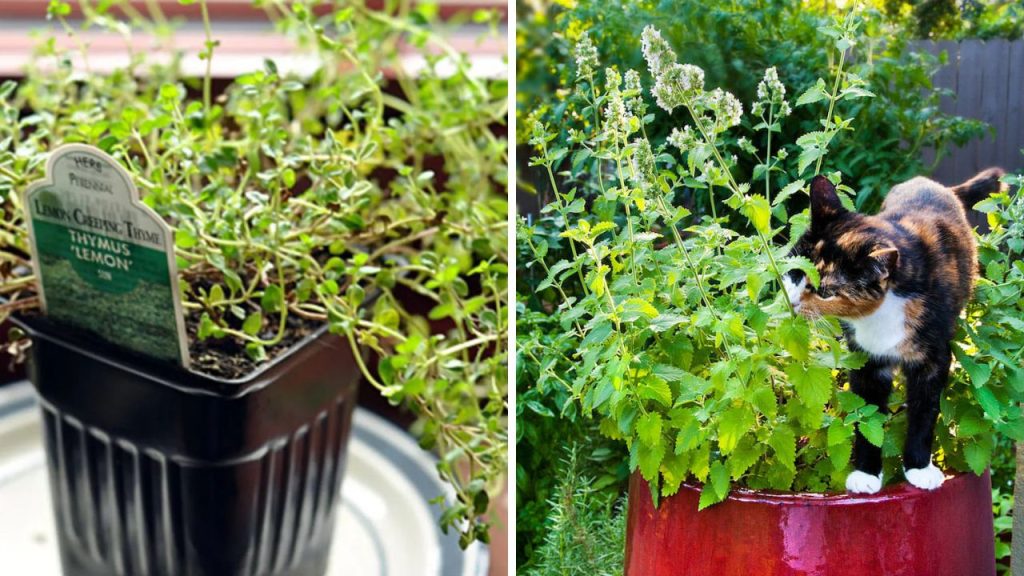Looking to refresh your flower beds and give your garden that polished, professionally landscaped look? One of the most transformative (yet often overlooked) ways to elevate your outdoor living space is through flower bed edging.
Whether you’re into modern back porch ideas or just want your backyard to feel more styled and intentional, the right edging can make all the difference. From natural stones to sleek metals, there’s something for every taste, budget, and style preference.
Below are 15 beautifully creative and practical flower bed edging ideas, perfect for creating curb appeal and enhancing your garden’s design. Each one offers a unique way to frame your beds while giving your yard a more finished, intentional vibe.
1. Brick Edging
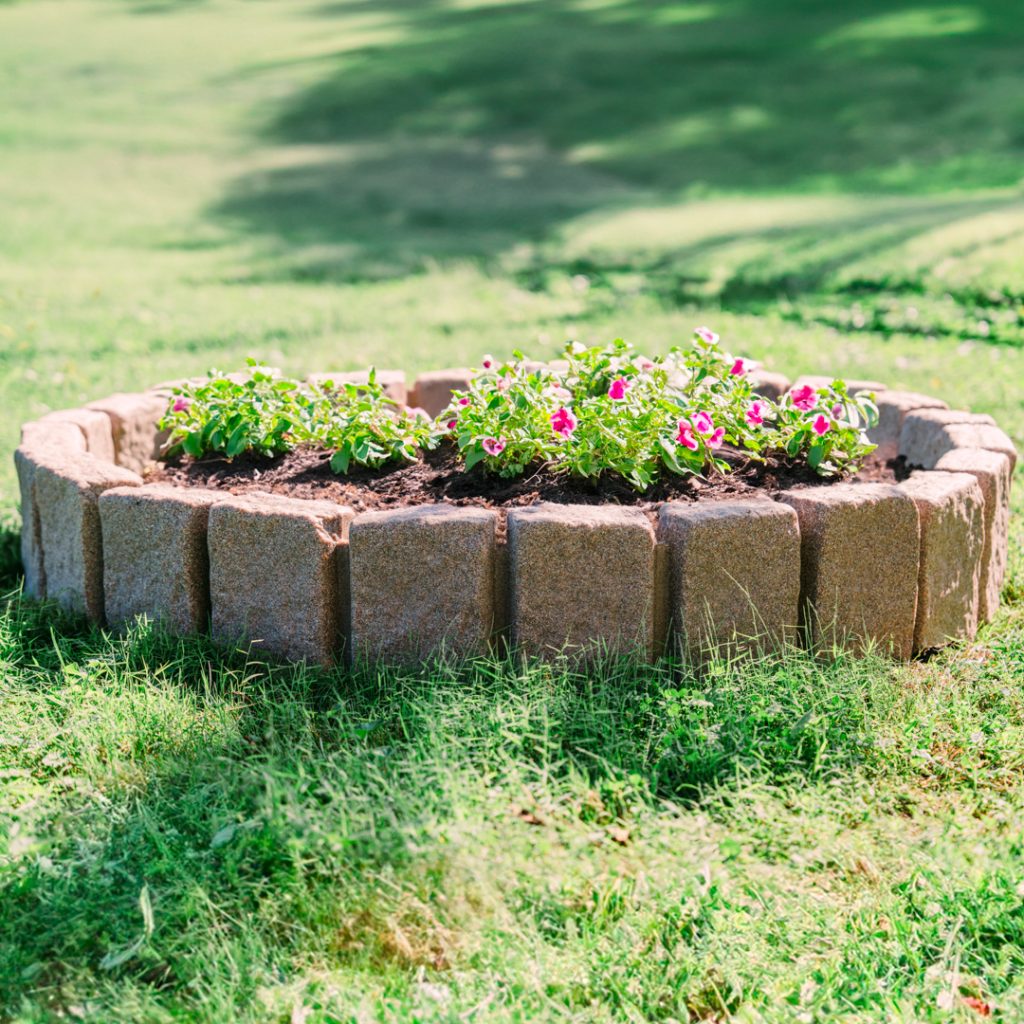
Brick edging is a timeless choice for flower beds, combining durability with a touch of classic charm.
This option works well in both traditional and modern garden designs. The appeal of brick lies in its versatility—you can install it flat, upright, or at an angle to create different textures and profiles. For a more contemporary look, opt for a uniform color and pattern. If you’re going for rustic elegance, mixing reclaimed bricks in various shades can add visual interest.
What makes brick edging especially appealing is its long-lasting nature. Unlike wood, it doesn’t rot, and it handles weather fluctuations beautifully. It’s ideal for gardens that transition from summer blooms to fall foliage and even winter decor.
Installation can be as easy as digging a trench and laying the bricks on a level surface. For extra stability, use landscaping adhesive or mortar. You can also integrate it with gravel paths or pavers to tie your garden seamlessly into your overall back porch decor.
Beyond aesthetics, brick edging also serves as a functional barrier that keeps mulch in place and prevents grass from creeping into your beds. It gives everything a crisp, clean look with very little maintenance.
2. Natural Stone Edging
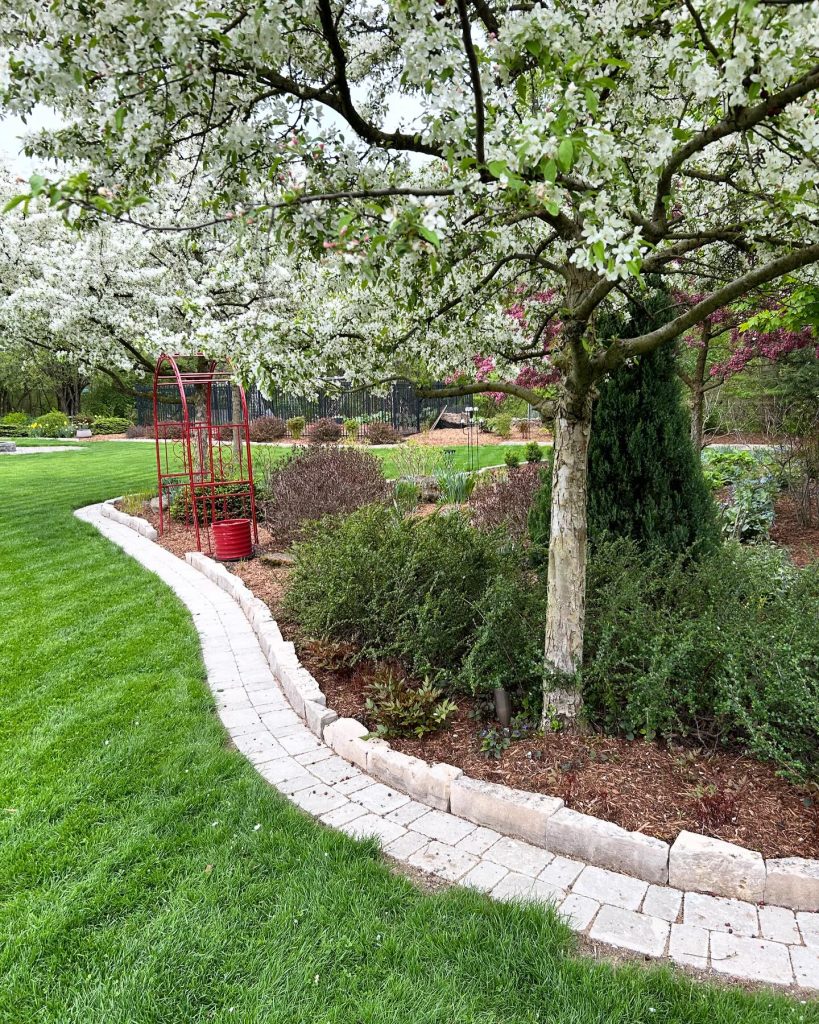
Natural stone edging is the perfect choice for creating an organic, earthy feel in your garden.
This option offers flexibility in design and works exceptionally well for cottage-style gardens or more relaxed outdoor living spaces. You can use stones of varying shapes and sizes to create a more rustic edge or go with cut and polished stones for a refined, modern touch.
One of the key advantages of natural stone is its ability to blend seamlessly into the landscape. It’s not just about beauty—stone is incredibly durable, weather-resistant, and will last for decades without much upkeep.
To install, you’ll want to dig a shallow trench and embed the stones firmly into the soil. You can stack them to create low walls or line them side by side for a more subtle look. This edging works great around curving flower beds or winding garden paths.
Pair natural stone with modern patio furniture and some decorative outdoor lighting to create a space that feels like a boutique retreat. It’s a high-end look that doesn’t scream for attention, yet elevates everything around it.
3. Metal Landscape Edging
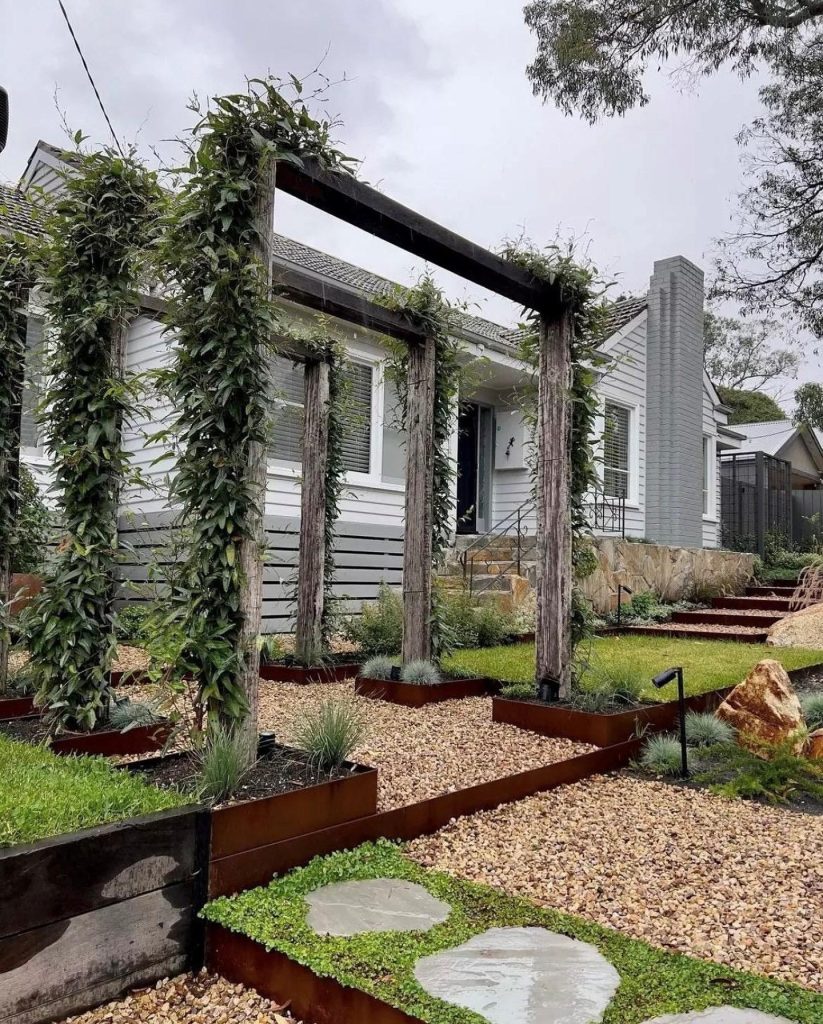
For a sleek, minimalist aesthetic, metal landscape edging is an outstanding choice.
Often made from aluminum or steel, this edging type offers clean lines and modern appeal—perfect for those who love crisp garden architecture and structured outdoor layouts. It’s especially popular in contemporary landscaping and works well with gravel, pavers, or even concrete elements on your back porch.
One major benefit of metal edging is its durability. Unlike plastic or wood, it won’t warp or deteriorate over time. It also holds up beautifully in extreme weather and provides excellent separation between grass and your flower beds.
Installation usually involves placing strips of metal into narrow trenches and securing them with stakes. The final look is very low-profile, almost invisible from a distance, which allows your plants to shine.
This type of edging blends effortlessly with modern outdoor furniture and minimalist decor. Add some sleek lanterns or solar lighting, and your entire space takes on a magazine-worthy look with very little effort.
4. Wooden Timber Edging
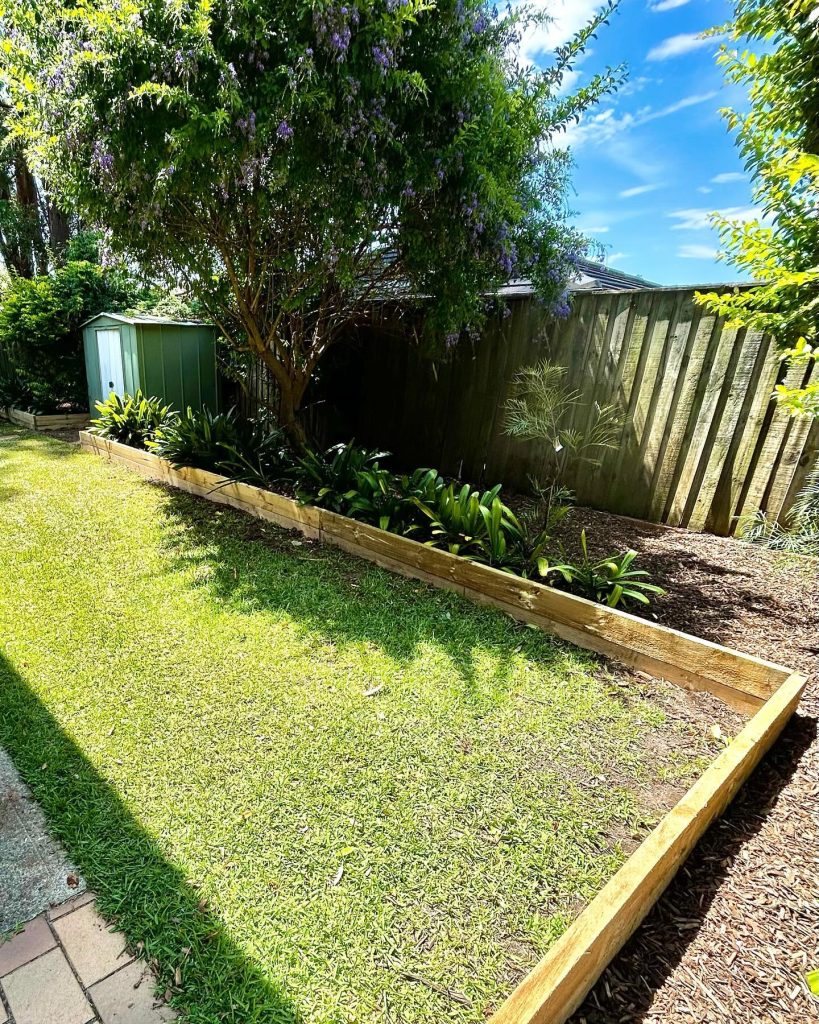
Source
If you’re aiming for a warm, natural vibe, wooden timber edging might be just what your garden needs.
Typically made from treated lumber, cedar, or redwood, timber edging is both functional and beautiful. It lends a natural, welcoming tone to your flower beds and works exceptionally well in more rustic or woodland-inspired outdoor settings.
You can go with horizontal timber beams for a structured, raised-bed look or place the wood vertically for a picket-style border. Either option offers strong visual framing for your flowers and shrubs, while also keeping mulch and soil neatly in place.
Treated wood resists rot and insects, making it a great long-term option. Still, it’s smart to re-treat or seal the wood every few years, especially in wetter climates.
Pair timber edging with a cozy seating area featuring wooden outdoor furniture or planters to create continuity in your design. This edging type also complements other natural materials like stone or gravel, giving your outdoor living space a cohesive, earthy feel.
5. Concrete Curbing
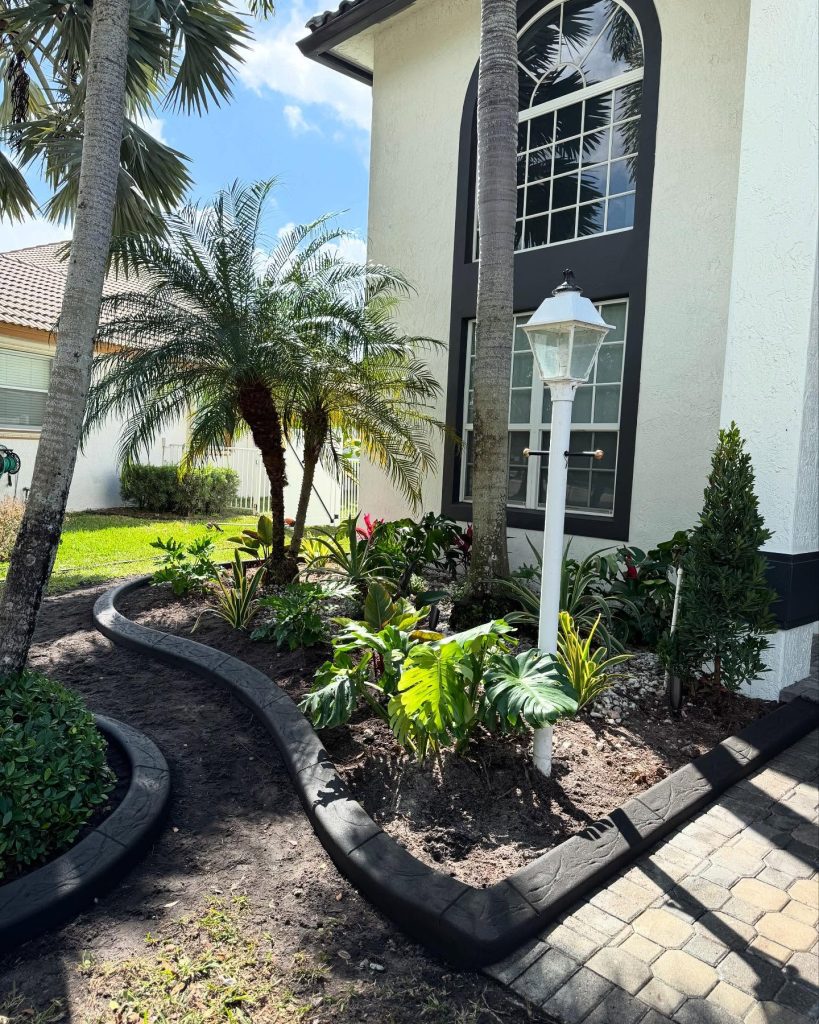
Source
Concrete curbing is a fantastic solution for homeowners who want durability and a clean, professional finish.
This edging style involves creating custom concrete borders that can be poured directly into molds along your flower beds. It’s especially popular among those looking for modern back porch ideas that prioritize function and form.
Concrete can be colored, stamped, or shaped to match your design preferences. Want something sleek and smooth? Done. Prefer a stamped stone pattern with a stained finish? That’s an option too. This level of customization makes concrete curbing an attractive choice for a wide range of styles—from contemporary to craftsman.
It’s also one of the most permanent edging solutions available, requiring almost no maintenance once installed. It resists cracking, shifting, and weather damage, making it ideal for climates with freeze-thaw cycles.
Concrete edging pairs well with structured flower beds, gravel pathways, and modern patio furniture. It’s a great way to frame your outdoor space while maintaining a clean, manicured look throughout the year.
6. Gabion Wall Edging
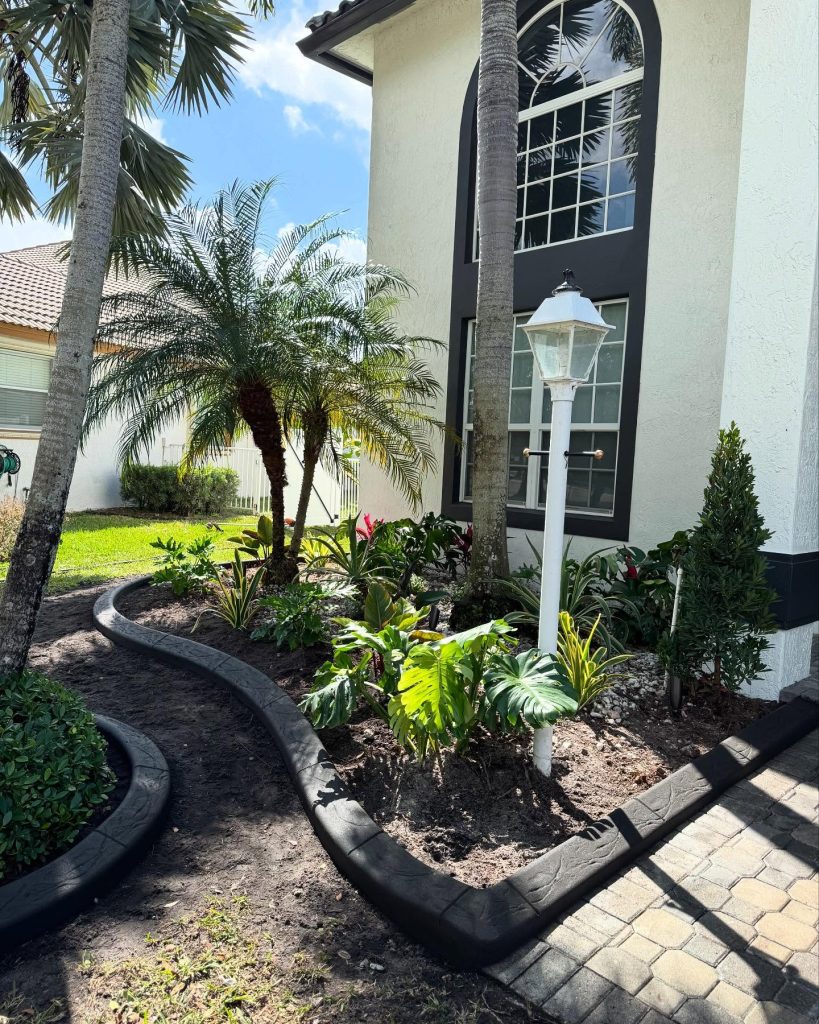
Gabion walls bring an industrial-meets-rustic flair to any garden and are an especially bold choice for flower bed edging.
A gabion is essentially a wire cage filled with rocks or stones. For edging, smaller versions can be used to define flower beds while adding texture and dimension to your landscape. They’re ideal for sloped yards or terraced garden designs but also work beautifully in flat spaces when you want a bold, architectural feature.
Gabion edging can be as simple or as ornate as you like. You can fill the cages with river rocks, recycled concrete, glass stones, or even bricks for a more eco-conscious approach. The design potential here is virtually endless.
This type of edging stands out in modern garden layouts, especially when paired with black metal accents or geometric patio furniture. It creates a strong visual anchor for your flower beds while providing serious durability and erosion control.
It also offers a great conversation starter—perfect if you enjoy hosting outdoor gatherings or showing off your unique back porch decor ideas.
7. Woven Willow Edging

For a touch of charming countryside appeal, consider woven willow edging.
This natural, handmade style is often seen in English cottage gardens and adds a whimsical, storybook vibe to your outdoor space. The flexible willow branches are woven between upright stakes, creating a soft, curved border that beautifully frames flower beds.
Willow edging is perfect for informal gardens where you want to maintain a relaxed and organic feel. It works especially well around curved or meandering beds filled with wildflowers, herbs, or ornamental grasses.
While it’s not as permanent as stone or concrete, willow can last several seasons with proper care. It’s also biodegradable and eco-friendly, making it a sustainable choice.
This edging pairs well with cozy seating nooks, vintage-inspired decor, and hanging lanterns. If you’re looking to infuse your outdoor living area with charm and personality, woven willow is a delightful option.
8. Decorative Fence Panels
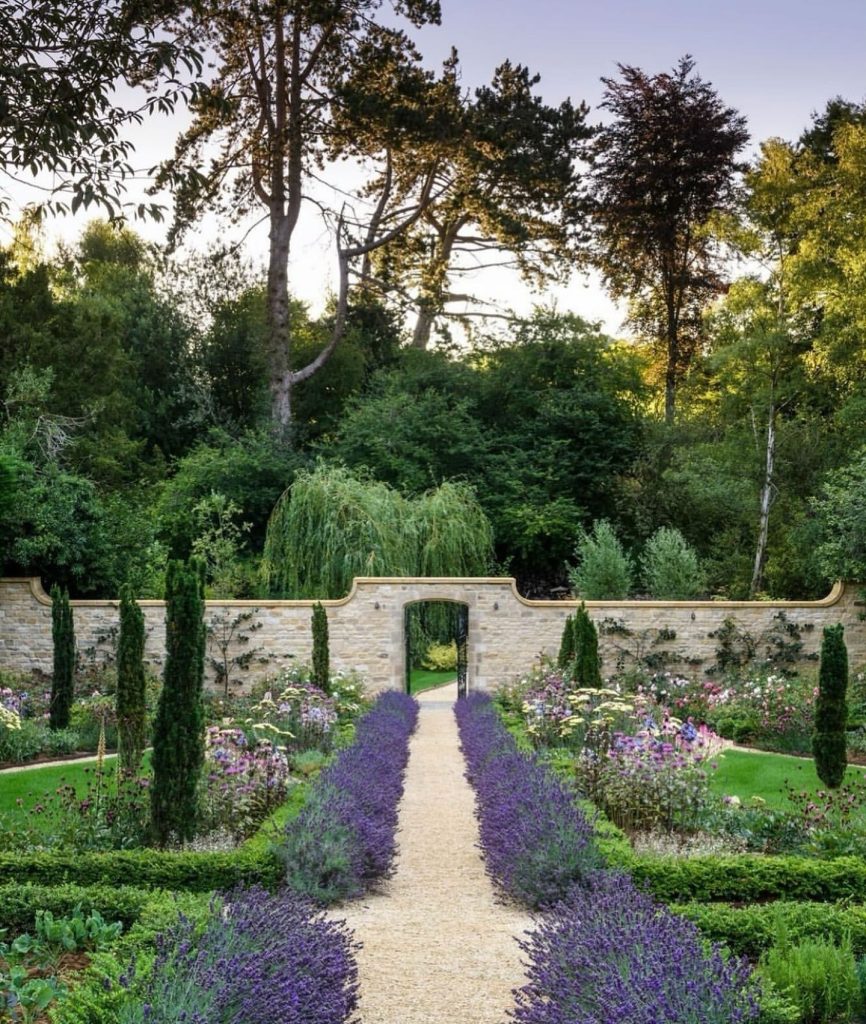
Miniature decorative fence panels offer a playful and practical way to edge your flower beds.
These low-profile fences come in a variety of materials—metal, plastic, or wood—and are often designed with ornate scrolls, pickets, or lattice patterns. They add height and definition to your beds while also serving as a barrier for pets or small children.
This option is incredibly easy to install. Most panels come with built-in stakes that simply push into the ground. They’re great for renters or anyone looking for a non-permanent solution that still looks polished.
Decorative fencing works well in traditional or Victorian-style gardens, especially when paired with lush blooms like roses or hydrangeas. You can match the panel color to your garden furniture or porch railing to tie your outdoor design together.
Whether you’re planning a romantic garden or want to add some visual flair, decorative fence edging is an easy win.
9. Recycled Glass Bottle Edging
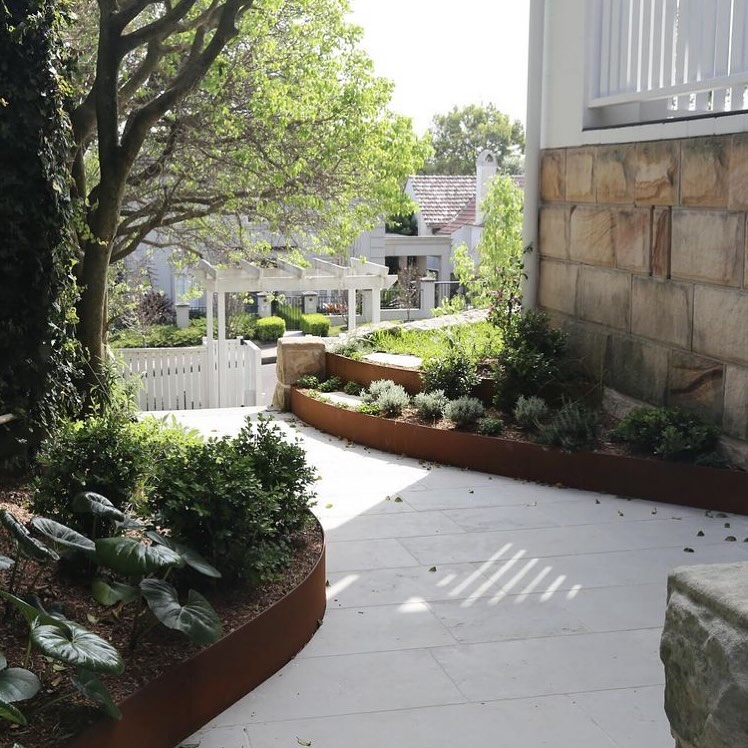
Looking for something quirky and eco-conscious? Try using recycled glass bottles for your flower bed edging.
This creative DIY solution involves burying bottles neck-down into the soil to create a colorful, translucent border. It’s especially stunning when the sun hits it just right, adding a bit of sparkle to your garden.
You can use bottles of a single color for a more cohesive look or mix and match for a mosaic effect. Greens, blues, and ambers tend to be the most visually appealing. While it may sound rustic, with thoughtful spacing and color coordination, this edging can actually look quite modern.
Glass bottle edging is perfect for gardeners who love bold decor and enjoy upcycling. It adds character and personality to your outdoor living area while keeping things fun and budget-friendly.
For safety, make sure the bottles are firmly embedded in the soil and avoid using broken glass. You can also sand the edges if you’re cutting the bottoms off for a different style.
10. Terracotta Tile Edging
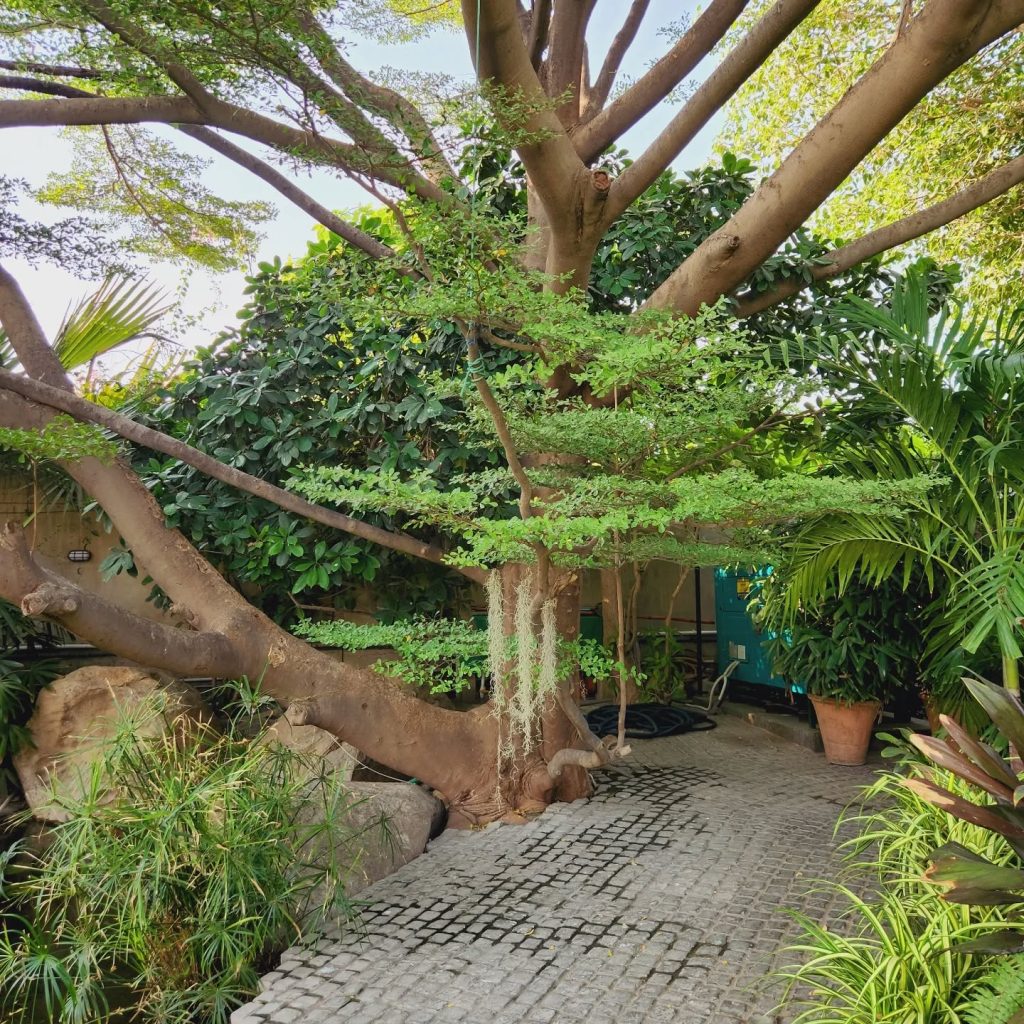
Terracotta tile edging brings warmth, color, and a Mediterranean flair to your garden design.
These tiles can be installed upright, like a small wall, or laid flat in a trench to define the edge of your beds. They work beautifully with terracotta planters, clay decor, or Spanish-style outdoor themes. The natural reddish hue of terracotta pairs perfectly with greenery, creating an earthy but vibrant contrast.
One major benefit is that terracotta is porous, allowing water to pass through and preventing excess moisture from building up near plant roots. It’s also surprisingly durable in warm climates and helps regulate soil temperature.
You can mix shapes—like using half-moon tiles next to rectangular pieces—or go with a uniform layout for a cleaner look. Over time, terracotta develops a charming patina that adds even more character to your garden.
This style of edging works wonderfully with wrought iron furniture, hanging baskets, and colorful back porch decor. It’s both artistic and functional—a perfect match for any garden with soul.
11. PVC or Plastic Edging
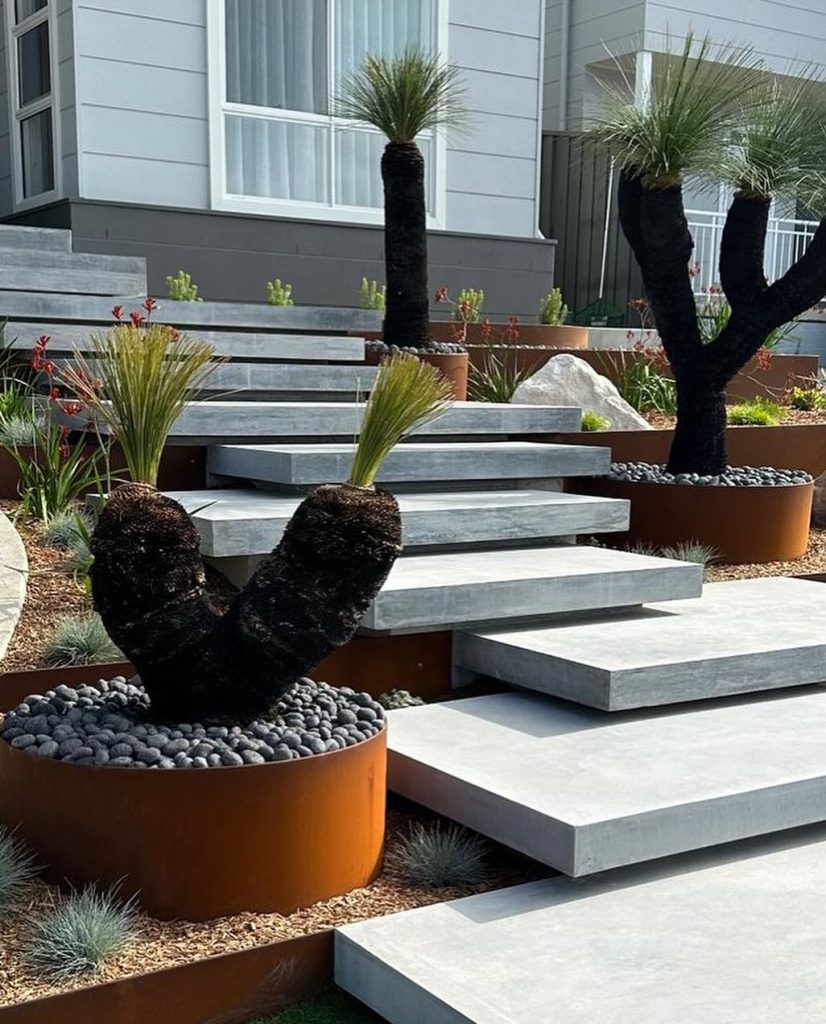
PVC or plastic edging is a practical and affordable solution that offers surprising versatility in design.
Lightweight and flexible, plastic edging can be molded around curves or straight sections, making it suitable for virtually any flower bed layout. It’s often available in various colors and finishes—some mimic stone or metal for a more elevated appearance. If you’re working on a tight budget but still want a clean, organized garden, this is an excellent option.
Installation is simple. Most plastic edging kits include stakes and connectors for seamless alignment. Just dig a shallow trench, lay the edging in place, and secure it with the stakes. It’s a great weekend project that delivers instant results.
Because it resists moisture and weathering, plastic edging holds up well in rainy or humid climates. It’s also safe for use around pets and kids, and won’t splinter or crack like some wood materials.
Plastic edging blends effortlessly into flower beds with dense plantings or vibrant ground covers. Pair it with colorful outdoor planters and modern back porch decor for a vibrant, cohesive outdoor living vibe without breaking the bank.
12. Bamboo Edging
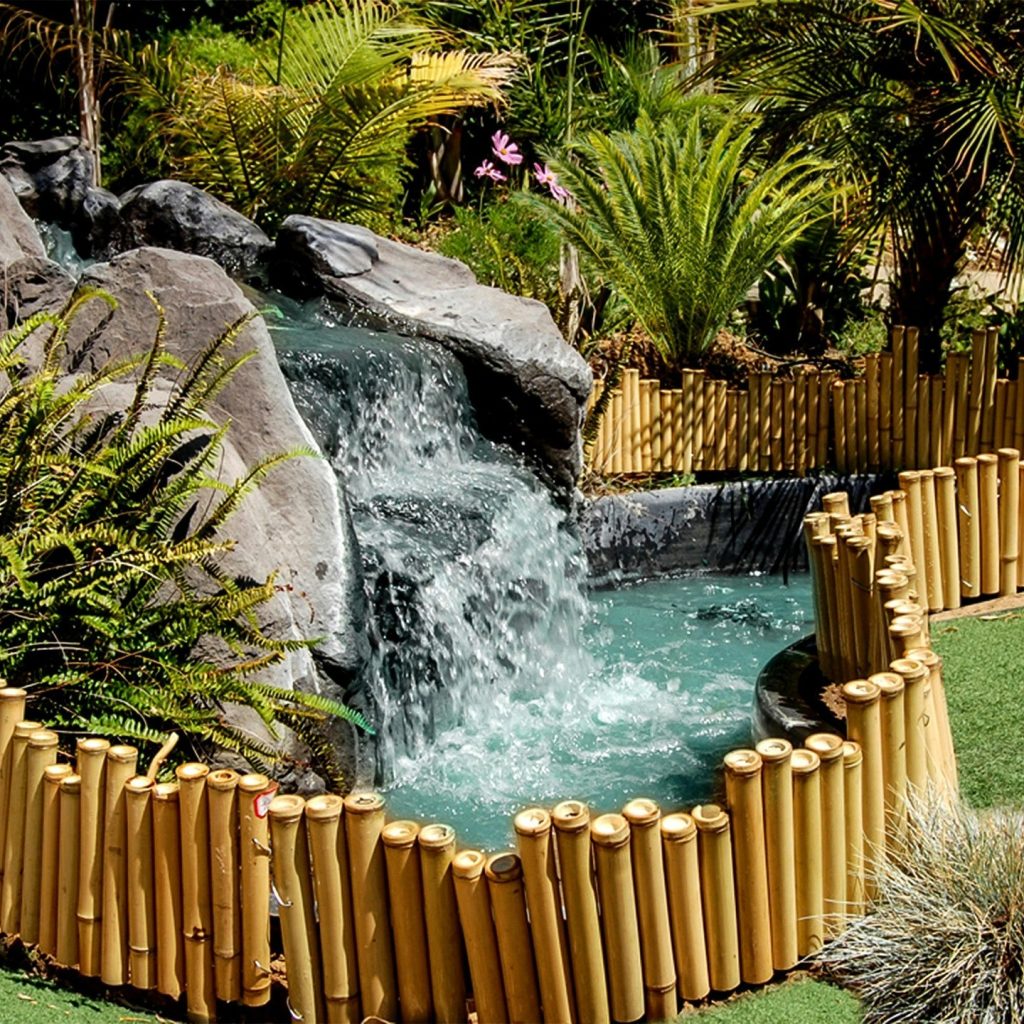
Bamboo edging brings an exotic, eco-friendly element to your garden while maintaining a sleek, organized look.
Available in rolled or panel styles, bamboo edging is often used to create defined borders in Zen, tropical, or minimalist landscapes. It’s naturally pest-resistant and quick to install, making it a great choice for both novice and experienced gardeners.
To install, place the bamboo fencing into a shallow trench and secure it with landscape stakes. Some versions are connected with wire and can be curved around bed corners or sloped terrain. The natural texture and warm tones of bamboo create a calming, earthy ambiance that instantly enhances outdoor spaces.
Pair bamboo edging with smooth river rocks, small fountains, or minimalist patio furniture to complete the spa-like aesthetic. It’s an excellent way to tie in more tranquil modern back porch ideas or accentuate a meditation corner.
While it may need occasional sealing to extend its life, bamboo remains one of the most sustainable and attractive natural materials you can use in your garden.
13. Railroad Tie Edging
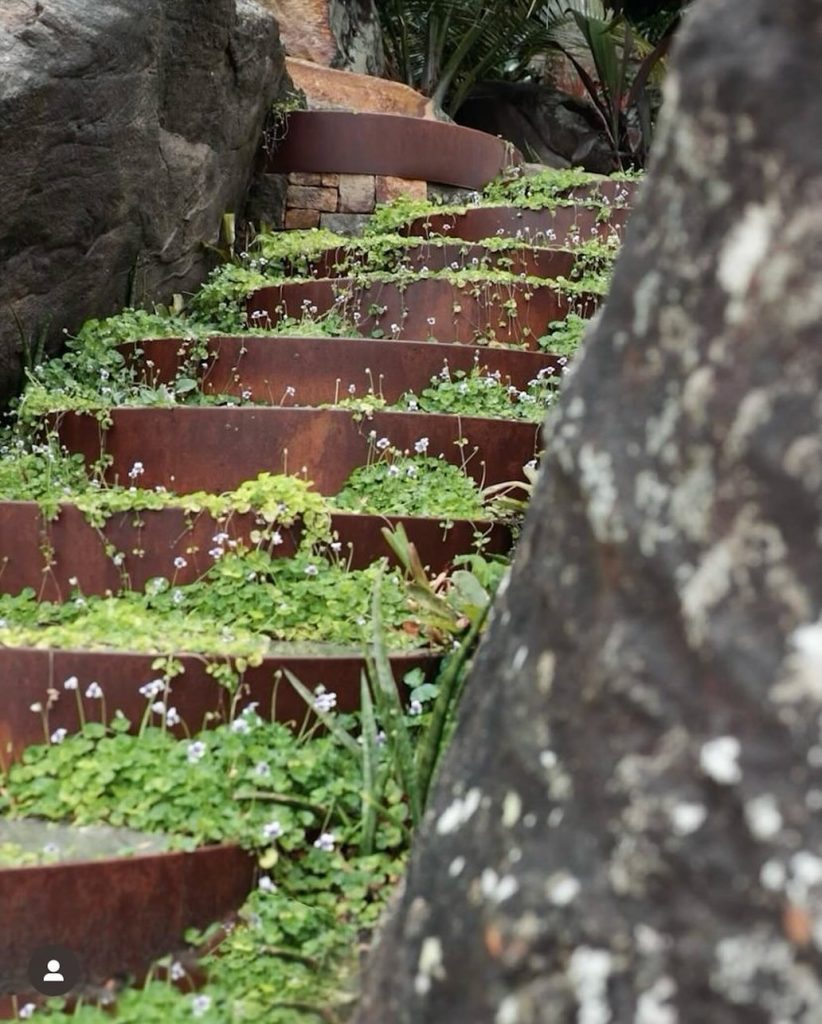
For a bold, rustic look with a vintage flair, railroad tie edging makes a strong impression.
Traditionally made from large, heavy-duty wood beams used in railroads, these ties add substantial weight and character to your landscape. Their robust, chunky appearance makes them perfect for framing larger flower beds or raised garden areas.
You can lay them flat as simple barriers or stack them to create tiered edging that doubles as seating or retaining walls. They’re especially striking in farmhouse-style gardens or alongside rugged modern patio furniture.
However, it’s important to note that older railroad ties may have been treated with creosote, which can be harmful to plants and soil. Look for untreated or eco-friendly versions that offer the same aesthetic without the chemicals.
Installation requires some elbow grease due to their weight, but once in place, they’re incredibly durable and nearly maintenance-free. Combine them with gravel paths, metal lanterns, or vintage-inspired decor to round out a nostalgic yet modern outdoor living area.
14. Shell Edging
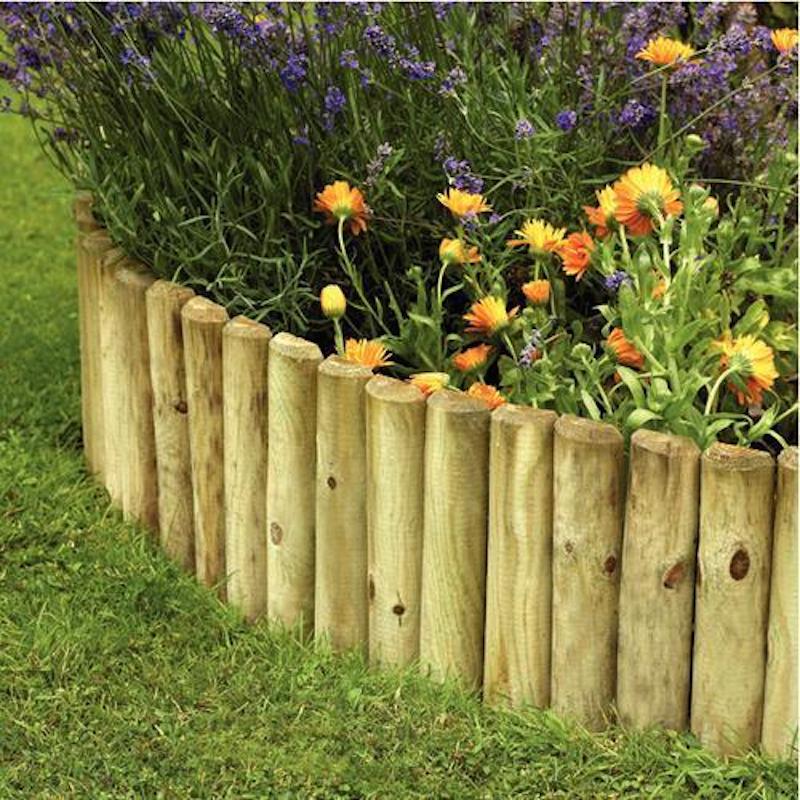
Bring a bit of the beach to your backyard with shell edging, an unexpected and whimsical way to frame flower beds.
This coastal-inspired edging uses large clam or scallop shells to line garden borders. When arranged uniformly, the shells create a delicate, textured edge that’s perfect for light, sandy soil or themed gardens near the water. They also pair beautifully with ornamental grasses, succulents, or pastel-toned flowers.
Shell edging is fairly easy to install—simply press the shells halfway into the soil, slightly overlapping for a tighter border. While this style is more decorative than structural, it offers a magical seaside vibe that enhances any relaxed outdoor setting.
It works especially well in gardens with white pebbles, driftwood features, or nautical accents. Add some rope lanterns or coastal back porch decor to complete the beachy look.
Because shells are biodegradable over time, you may need to refresh them occasionally. Still, for charm and conversation, shell edging is one of the most delightful ways to personalize your garden.
15. Living Edging with Plants

If you want to blur the line between your flower bed and the lawn, living edging made from plants is a stunning and natural alternative.
Living edging involves using compact, low-growing plants to define the perimeter of your garden. Popular choices include lavender, boxwood, thyme, mondo grass, and creeping Jenny. These plants offer soft, flowing borders that change with the seasons, bringing both structure and movement to your flower beds.
This approach works exceptionally well in English gardens, pollinator gardens, or any space that emphasizes natural textures and lush greenery. It adds depth, fragrance, and color while keeping the garden beds neat and tidy.
To create living edging, plant your chosen variety in a single or double row along the edge of your bed. With regular trimming, the plants will form a dense, uniform border. This not only enhances visual appeal but also helps retain mulch and block weeds.
Living edging complements other elements like rustic garden furniture, ceramic planters, or vintage-inspired back porch ideas. It’s a living frame that grows along with your garden and adds an elegant softness that hard materials simply can’t offer.
Conclusion: Frame Your Flower Beds with Style and Purpose
Edging may seem like a small detail in the grand scheme of outdoor living, but it’s one of the most effective ways to bring order, beauty, and a polished finish to your garden.
From the structured sophistication of metal and concrete to the rustic charm of wood, bamboo, or even recycled glass, there’s an edging style for every home and design preference. Each option can dramatically enhance your curb appeal, define your landscape layout, and tie together elements like modern patio furniture, gravel paths, or back porch decor.
Whether you’re aiming for a minimalist aesthetic, a whimsical cottage garden, or a bold and rustic retreat, thoughtful edging provides the framework your flowers deserve.
So, take your pick, dig in, and let your garden tell a beautifully edged story—one blooming border at a time.
